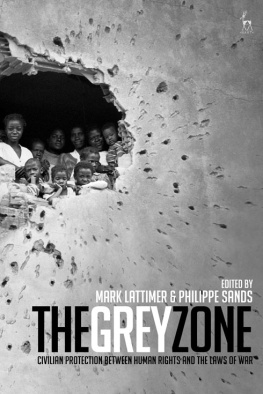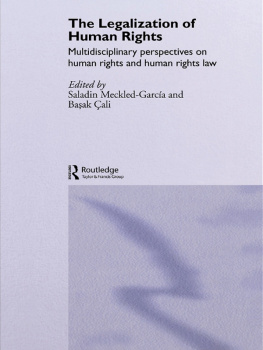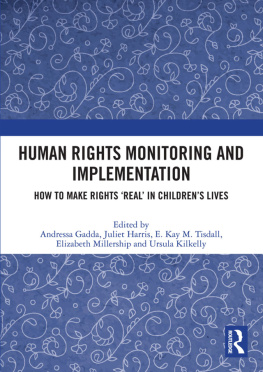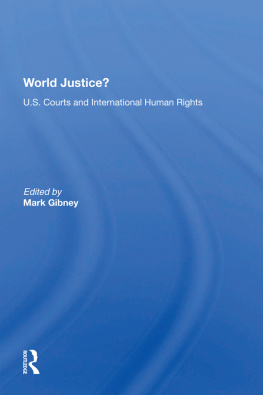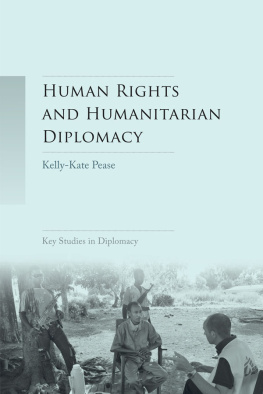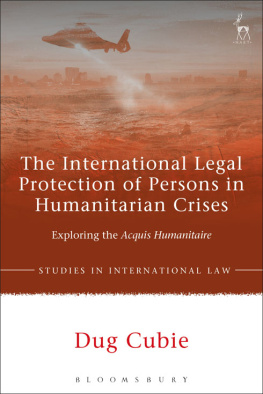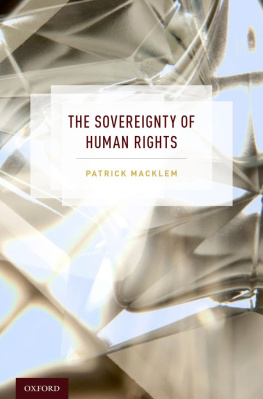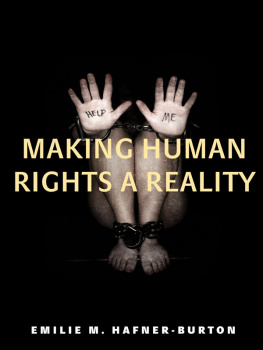Table of Contents

THE GREY ZONE
The high civilian death toll in modern, protracted conflicts such as those in Syria or Iraq indicates the limits of international law in offering protections to civilians at risk. A recent conference of states convened by the International Committee of the Red Cross referred to an institutional vacuum in the area of international humanitarian law implementation. Yet both international humanitarian law and the law of human rights establish a series of rights intended to protect civilians. But which law or laws apply in a particular situation, and what are the obstacles to their implementation? How can the law offer greater protections to civilians caught up in new methods of warfare, such as drone strikes, or targeted by new forms of military organisation, such as transnational armed groups? Can the implementation gap be filled by the growing use of human rights courts to remedy violations of the laws of armed conflict, or are new instruments or mechanisms of civilian legal protection needed?
This volume brings together contributions from leading academic authorities and legal practitioners on the situation of civilians in the grey zone between human rights and the laws of war. The chapters in assess prospects for the development of new mechanisms for addressing violations. As military intervention to protect civilians remains contested, this volume looks at the potential for developing alternative approaches to the protection of civilians and their rights.
The Grey Zone
Civilian Protection Between Human
Rights and the Laws of War
Edited by
Mark Lattimer and Philippe Sands

HART PUBLISHING
Bloomsbury Publishing Plc
Kemp House, Chawley Park, Cumnor Hill, Oxford, OX2 9PH, UK
HART PUBLISHING, the Hart/Stag logo, BLOOMSBURY and the Diana logo are
trademarks of Bloomsbury Publishing Plc
First published in Great Britain 2018
Copyright The editors and contributors severally 2018
The editors and contributors have asserted their right under the Copyright,
Designs and Patents Act 1988 to be identified as Authors of this work.
All rights reserved. No part of this publication may be reproduced or transmitted in any
form or by any means, electronic or mechanical, including photocopying, recording,
or any information storage or retrieval system, without prior permission
in writing from the publishers.
While every care has been taken to ensure the accuracy of this work, no responsibility for
loss or damage occasioned to any person acting or refraining from action as a result
of any statement in it can be accepted by the authors, editors or publishers.
All UK Government legislation and other public sector information used in the work is
Crown Copyright . All House of Lords and House of Commons information used in
the work is Parliamentary Copyright . This information is reused under the terms
of the Open Government Licence v3.0 (http://www.nationalarchives.gov.uk/
doc/open-government-licence/version/3) except where otherwise stated.
All Eur-lex material used in the work is European Union,
http://eur-lex.europa.eu/, 19982018.
A catalogue record for this book is available from the British Library.
Library of Congress Cataloging-in-Publication data
Names: Lattimer, Mark, editor. | Sands, Philippe, 1960- editor.
Title: The grey zone : civilian protection between human rights and the laws of war /
edited by Mark Lattimer and Philippe Sands.
Description: Oxford [UK] ; New York, NY : Hart Publishing, [2018] |
Includes bibliographical references and index.
Identifiers: LCCN 2018010513 (print) | LCCN 2018012288 (ebook) |
ISBN 9781509908653 (Epub) | ISBN 9781509908639 (hardback : alk. paper)
Subjects: LCSH: WarProtection of civilians. | Combatants and noncombatants
(International law) | War (International law) | Civilians in war. |
Civilian war casualties. | War victimsLegal status, laws, etc. |
War victimsCivil rights. | Humanitarian law.
Classification: LCC KZ6515 (ebook) | LCC KZ6515 .G74 2018 (print) |
DDC 341.6/7dc23
LC record available at https://lccn.loc.gov/2018010513
ISBN:HB:978-1-50990-863-9
ePDF:978-1-50990-864-6
ePub:978-1-50990-865-3
Typeset by Compuscript Ltd, Shannon
To find out more about our authors and books visit www.hartpublishing.co.uk.
Here you will find extracts, author information, details of forthcoming events
and the option to sign up for our newsletters.
The high and apparently growing civilian death toll in protracted contemporary conflicts reflects the limits on the ability of international rules, and the legal order of which they form a part, to protect civilians at risk. A recent conference of states convened by the International Committee of the Red Cross described an institutional vacuum in the area of international humanitarian law implementation. Such understatement is coupled with the absence of political willby states and international organisationsto act.
Since 1945 a body of international humanitarian and human rights laws has been adopted to establish a series of rightsfor individuals and groupsthat should, in theory at least, protect civilians. But which law or laws apply in a given situation, and what are the real obstacles to their implementation, their application and enforcement? How can the law assist civilians injured by new methods and means of warfare, such as drone strikes, or targeted by new forms of military organisation, such as transnational armed groups? Can the implementation gap be filled by the growing but sometimes controversial use of human rights courts to remedy violations committed in armed conflict, or by proposals for new instruments or mechanisms of civilian legal protection?
This volume brings together contributions from leading scholars and legal practitioners to assess the situation of civilians in the grey zone, under humanitarian law and human rights law, two areas that have emerged separately and are subject to their own communities of practice (the terms international humanitarian law (IHL) and law of armed conflict are used interchangeably in the volume, depending on the preference of the individual contributor or the relevant context). In assesses the development of new or potential mechanisms for addressing violations.
The practical importance of these legal questions for the protection of civilians has been impressed on both of us over the years as we worked, separately, on many cases of atrocity, including in the former Yugoslavia, the Democratic Republic of Congo, and Iraq. We are grateful to the many colleagues with whom we have worked and shared ideas and whose names are too numerous to list here. Particular thanks go to Lorenza Cocco and Dborah San Nicols Del Amo for their excellent legal research assistance. At Hart Publishing we would like to thank Sinead Moloney and Emily Braggins. Thanks too to Piers Feltham, Ziyad Marar, Maggie Murphy and the trustees of the Ceasefire Centre for Civilian Rights.
The understanding of the inter-relationship between IHL and human rights law has advanced markedly in recent years, as reflected in the contributions to this book. It continues to be a swiftly-changing field, in response not just to developments in warfare and growing public concern at the erosion of basic humanitarian norms, but also to legal innovation as practitioners seek new avenues for obtaining effective redress and an end to mass impunity. We hope that this volume might offer a contribution to the potential for developing a more effective practice of civilian rights protection, and to the protection of the individuals and groups who constitute civilian populations.

